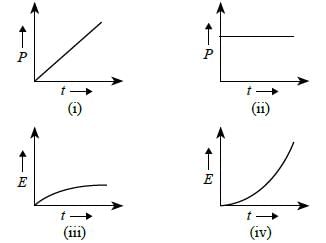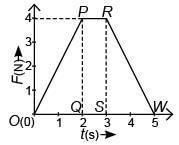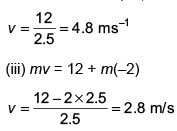High Order Thinking Skills (HOTs) - 2 - Class 9 MCQ
10 Questions MCQ Test - High Order Thinking Skills (HOTs) - 2
Fill in the blanks by selecting an appropriate option.
The chemical formula of water is H2O, where H stands for hydrogen and O stands for oxygen. When water undergoes electrolysis, it decomposes into hydrogen and oxygen gases. If 9 grams of water decompose completely, it produces (i) grams of hydrogen and (ii) grams of oxygen.
The chemical formula of water is H2O, where H stands for hydrogen and O stands for oxygen. When water undergoes electrolysis, it decomposes into hydrogen and oxygen gases. If 9 grams of water decompose completely, it produces (i) grams of hydrogen and (ii) grams of oxygen.
Fill in the blanks by selecting an appropriate option.
During photosynthesis, plants convert carbon dioxide and water into glucose and oxygen using sunlight. The chemical equation for photosynthesis is  . If a plant consumes 12 molecules of CO2 , it will produce (i) molecules of O2 and (ii) molecules of glucose.
. If a plant consumes 12 molecules of CO2 , it will produce (i) molecules of O2 and (ii) molecules of glucose.
During photosynthesis, plants convert carbon dioxide and water into glucose and oxygen using sunlight. The chemical equation for photosynthesis is
 . If a plant consumes 12 molecules of CO2 , it will produce (i) molecules of O2 and (ii) molecules of glucose.
. If a plant consumes 12 molecules of CO2 , it will produce (i) molecules of O2 and (ii) molecules of glucose.Fill in the blanks by selecting an appropriate option.
Newton's first law of motion states that an object at rest will stay at rest, and an object in motion will stay in motion unless acted upon by an external force. This law is also known as the law of (i). It implies that in the absence of a net force, the (ii) of an object remains constant.
Newton's first law of motion states that an object at rest will stay at rest, and an object in motion will stay in motion unless acted upon by an external force. This law is also known as the law of (i). It implies that in the absence of a net force, the (ii) of an object remains constant.
Fill in the blanks by selecting an appropriate option. The atomic number of an element is the number of protons in the nucleus of its atom. The mass number is the sum of the number of protons and neutrons in the nucleus. If an atom has 15 protons and 16 neutrons, its atomic number is (i) and its mass number is (ii).
Fill in the blanks by selecting an appropriate option.
The periodic table is arranged in periods and groups. Elements in the same group have similar chemical properties. The element with atomic number 17 belongs to group (i) and period (ii).
Identify the organelles (i)-(iv) from the given figures and select the correct statement regarding them.

Identify the plant tissues (i) and (ii) in the given figures and select the option that correctly identifies their location.
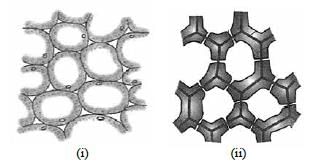

Study the given Venn diagram carefully
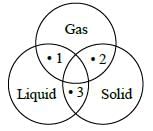
Which of the following statements is/are correct regarding 1, 2 and 3?
I. Point 1 represents gel like milk.
II. Point 2 represents solid foam like sponge.
III. Point 3 represents a sol type colloidal solution and it can be milk of magnesia.
IV. Point 1 can represent fog as well as milky glass.
The given graph represents the variation of magnitude of net force (F) exerted in x direction on a 2.50 kg particle with time. On the basis of given graph, fill in the blanks by selecting the correct option.
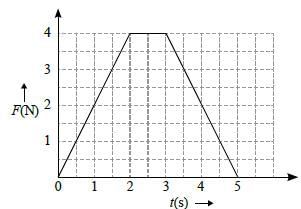
The impulse of the force is (i) kg ms–1. Final velocity of the particle, if it is originally at rest is (ii) ms–1. Its final velocity if its original velocity is –2.0 ms–1, is (iii) m s–1. The average force exerted on the particle for the time interval 0 to 5 s is (iv) N.
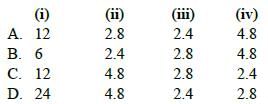
A vehicle is driven along a straight horizontal track by a motor which exerts a constant driving force. The vehicle starts from rest at t = 0 and the effects of the friction and air resistance are negligible. If the kinetic energy of the vehicle at time t is E and power developed by the motor is P, which of the following graphs is/are incorrect?
